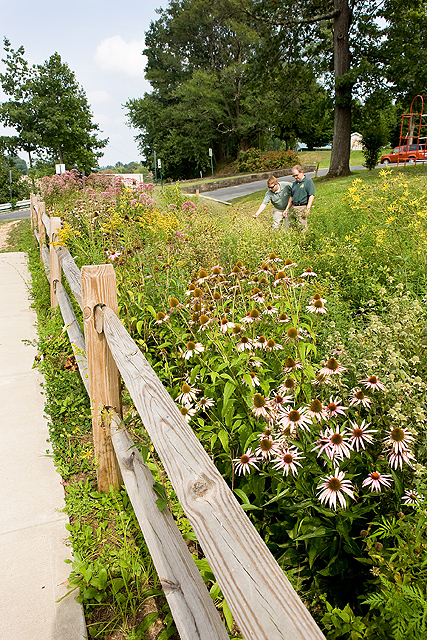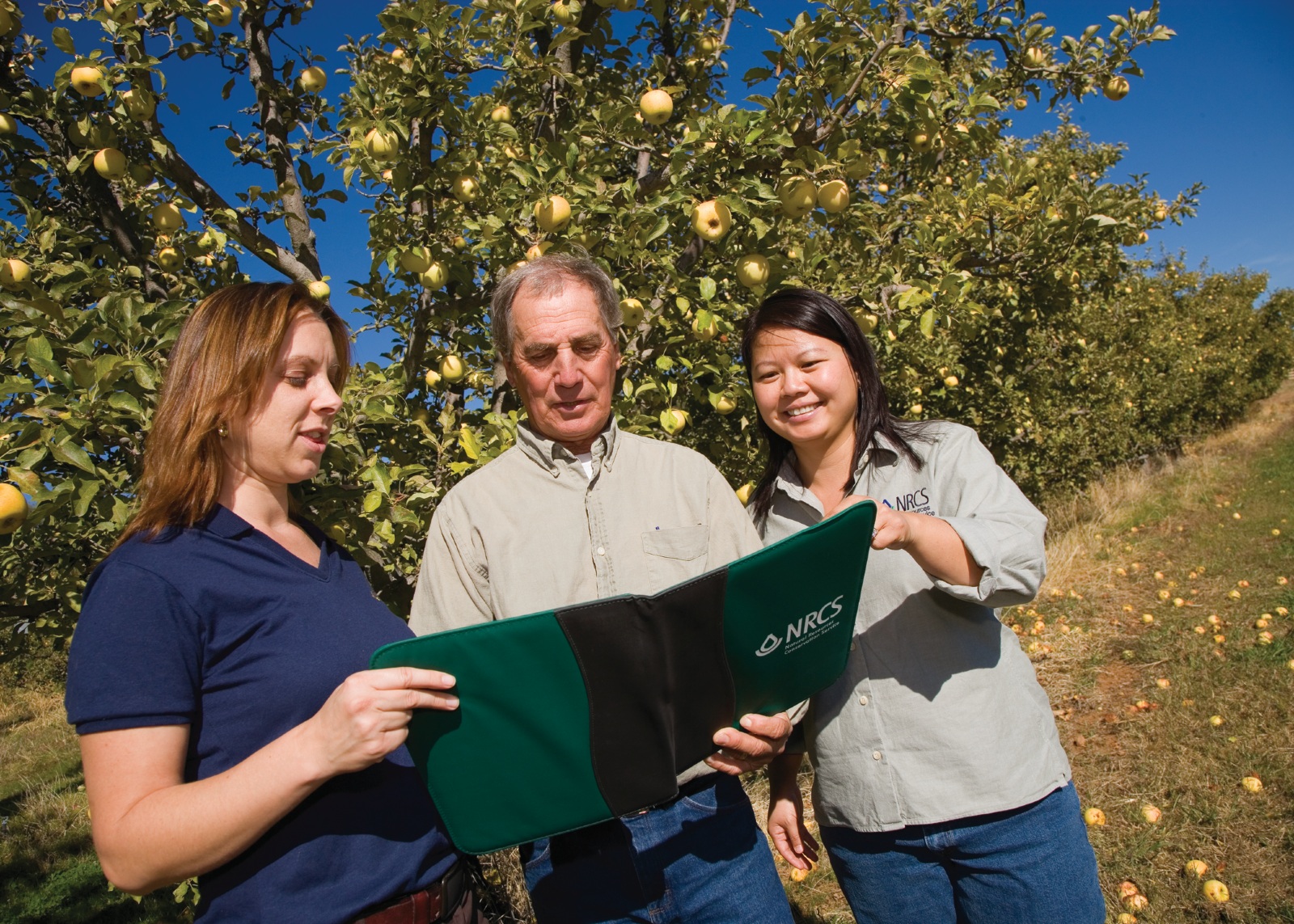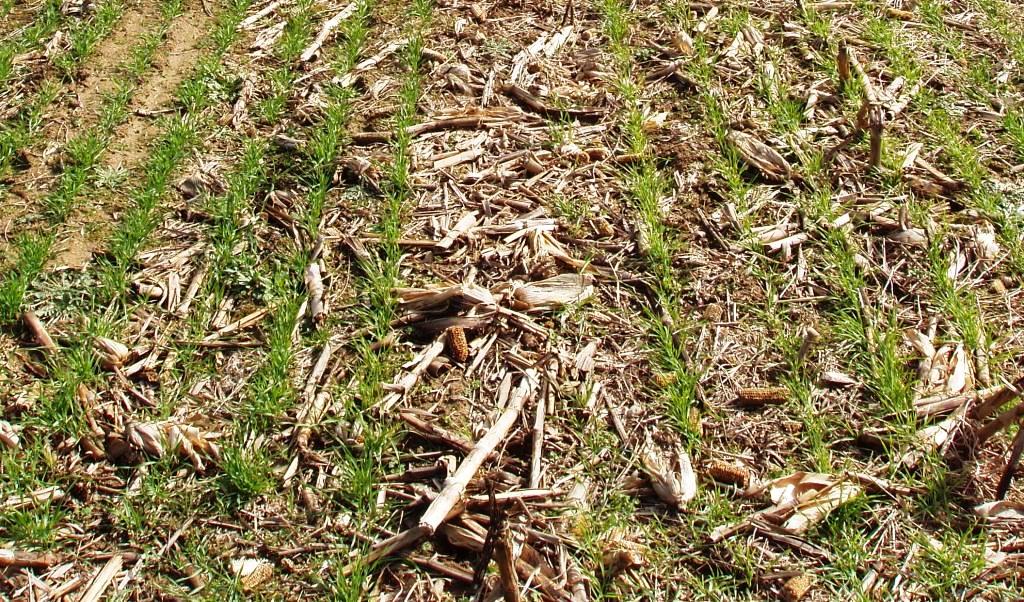-
Download:
My Results |
All BMPs
Bioretention Cells/Rain Gardens
 ARS hydrologist Douglas Boyer (right) and Beckley Sanitary Board operations manager Jeremiah Johnson discuss the performance of a rain garden constructed from local materials. The rain garden is being tested for its ability to reduce storm water runoff, increase infiltration, and remove excess nutrients and other pollutants from the runoff water before it gets to streams or other bodies of water. Photo by Stephen Ausmus. Photo Courtsey of USDA ARS.
ARS hydrologist Douglas Boyer (right) and Beckley Sanitary Board operations manager Jeremiah Johnson discuss the performance of a rain garden constructed from local materials. The rain garden is being tested for its ability to reduce storm water runoff, increase infiltration, and remove excess nutrients and other pollutants from the runoff water before it gets to streams or other bodies of water. Photo by Stephen Ausmus. Photo Courtsey of USDA ARS.
Practice Type: Structural
Landuse/Agriculture Type:
Climatic Zones: Temperate, Tropical
Regions: North America
Pollutants Treated: Nitrogen, Phosphorus, Sediment
N Efficiency1: 25-80%
P Efficiency1: 45-85%
S Efficiency1: 55-90%
Description: Bioretention involves excavating a pit and backfilling it with engineered media, topsoil, mulch, and vegetation. Bioretention areas are installed in shallow basins in which stormwater runoff is temporarily ponded and then treated by filtering through the bed components and through biological and biochecmical reactions within the soil matrix and around the root zones of the plants. Biorention areas capture peak discharge from storms, reducing the impacts of urban runoff. Filtered runoff may be collected and returned to the conveyance system via an underdrain or completely infiltrated into the underlying soils. 2
Implementation Considerations: Vegetation integrated into these basins affords aethestic values. Small bioretention basins (like rain gardens) can be designed from simple rules. For large systems, intended to replace major storm water conveyance systems, design calculations must be done by a qualified engineer familiar with hydrology and hydraulics. This practice will have detailed design standards for slope, velocity, infiltration rates, width, residence time, manning n value, maintenance, pipe placement, soil amendments, and various other design elements.
Scalable to small farms? No
1 "Documentation: Source Data, BMP Effectiveness Values." Chesapeake Assessment Scenario Tool. Web. 2013. http://casttool.org/Documentation.aspx .
2 Simpson, Thomas, and Sarah Weammert. "Developing Best Management Practice Definitions and Effectiveness Estimates for Nitrogen, Phosphorus and Sediment in the Chesapeake Bay Watershed." Chesapeake Bay Program. Dec. 2009. Web. June 2013. http://archive.chesapeakebay.net/pubs/BMP_ASSESSMENT_REPORT.pdf.
Commodity Cover Crops
 Cattle grazing on aerially seeded rye cover crop in November in southeastern Minnesota. Photo courtesy of Mark Zumwinkle, MDA.
Cattle grazing on aerially seeded rye cover crop in November in southeastern Minnesota. Photo courtesy of Mark Zumwinkle, MDA.
Practice Type: Management
Landuse/Agriculture Type: Row Crop
Climatic Zones: Temperate, Semiarid, Tropical
Regions: North America, Europe
Pollutants Treated: Nitrogen, Phosphorus, Sediment
N Efficiency1: 5-25%
P Efficiency1: 0%
S Efficiency1: 0%
Description: Commodity cover crops are crops grown over the fall and winter months after the primary crop is harvested. Unlike conservation cover crops which are not harvested, commodity cover crops can be harvested for grain, hay, or silage, and may receive fertilizer in the spring. Commodity cover crops prevent soil erosion and nutrient losses over the winter months. 2
Implementation Considerations: There is a moderate cost for seeds and planting and requires a harvest operation in the spring before the summer crop is planted. Since the crop is harvested instead of chopped it does not provide the soil fertility benefits that conservation cover crops provide.
Scalable to small farms? Yes
1 "Documentation: Source Data, BMP Effectiveness Values." Chesapeake Assessment Scenario Tool. Web. 2013. http://casttool.org/Documentation.aspx .
2 Kleinman, Peter, Larry Geohring, and Tammo Steenhuis. "Chesapeake Bay Scenario Builder Section 6: Best Management Practices For Nutrients and Sediment." Chesapeake Bay Phase 5.3 Community Watershed Model. Web. June 2013.
Conservation Cover Crops
 No-till planting of corn into cover crop of barley. Washington County, Virginia. Photographer: Jeff Vanuga. Photo Courtsey of USDA NRCS.
No-till planting of corn into cover crop of barley. Washington County, Virginia. Photographer: Jeff Vanuga. Photo Courtsey of USDA NRCS.
Practice Type: Management
Landuse/Agriculture Type: Row Crop
Climatic Zones: Temperate, Semiarid, Tropical
Regions: North America, Europe
Pollutants Treated: Nitrogen, Phosphorus, Sediment
N Efficiency1: 9-45%
P Efficiency1: 0-15%
S Efficiency1: 0-20%
Description: Conservation cover crops are planted and grown with minimal disturbance to the surface soil by seeding the crop directly into the vegetative cover or crop residue from the previous crop. Cover crops maintain vegetative cover on the field during a period that it might otherwise lay fallow, helping to prevent soil erosion and mobilization of nutrients. Cover crop helps to avoid nutrient losses by taking up residual nitrate and other nutrients from the soil after the main crop has been harvested in the summer or early autumn, leaving fewer nitrates available for leaching over winter. Conservation cover crops are plowed under before reaching maturity in order to enhance soil fertility for the next crop. Legumes are often used for cover crops because of their ability to fix nitrogen which then becomes available for the next crop. 2
Implementation Considerations: There is a moderate cost for seeds and planting and requires tillage, herbicide or cutting growth in the spring before the summer crop is planted. Effectiveness of cover crops is reduced when cover crops are established on very sandy soils where residual nitrate might have already migrated below the early rooting depth of a cover crop.
Scalable to small farms? Yes
1 "Documentation: Source Data, BMP Effectiveness Values." Chesapeake Assessment Scenario Tool. Web. 2013. http://casttool.org/Documentation.aspx .
2 Kleinman, Peter, Larry Geohring, and Tammo Steenhuis. "Chesapeake Bay Scenario Builder Section 6: Best Management Practices For Nutrients and Sediment." Chesapeake Bay Phase 5.3 Community Watershed Model. Web. June 2013.
Conservation Plan
 NRCS personel and landowner reviewing a conservation plan in a California orchard. Photo Courtsey of USDA NRCS.
NRCS personel and landowner reviewing a conservation plan in a California orchard. Photo Courtsey of USDA NRCS.
Practice Type: Management
Landuse/Agriculture Type: Row Crop, Pasture, Fodder, Rice, Small Grains
Climatic Zones: Temperate, Semiarid, Tropical
Regions: North America, Europe
Pollutants Treated: Nitrogen, Phosphorus, Sediment
N Efficiency1: 3-8%
P Efficiency1: 5-15%
S Efficiency1: 8-25%
Description: Farm conservation plans provide guidance to producers on the combination of agronomic, management and engineered practices that can protect and improve soil productivity and water quality, and prevent deterioration of natural resources on all or part of the farm. Plans are tailored to the production practices, land features and resource concerns of the individual farms. 2
Implementation Considerations: Conservation plan development requires site specific analyses by trained agronomists and should meet any relevant technical standards.
Scalable to small farms? Yes
1 "Documentation: Source Data, BMP Effectiveness Values." Chesapeake Assessment Scenario Tool. Web. 2013. http://casttool.org/Documentation.aspx .
2 Estimates of County-level Nitrogen and Phosphorus Data for Use in Modeling Pollutant Reduction Documentation for Scenario Builder Version 2.2." Chesapeake Bay. Dec. 2010. Web. May 2013. http://archive.chesapeakebay.net/pubs/SB_V22_Final_12_31_2010.pdf.; "EU Database of Best Practices." Living Water Exchange: Promoting Replication of Good Practices for Nutrient Reduction and Joint Collaboration in Central and Eastern Europe. Web. Sept. 2013. http://nutrient2.iwlearn.org/nutrient-reduction-practices/eu-database-of-practices/view .
Conservation Tillage
 Long-term Conservation Tillage Can Rebuild Soil Organic Matter Levels in Sandy Soils: Conservation tillage management resulted in an additional 7600 pounds of organic matter per acre in the top 5 cm (2 in) of soil compared to conventional tillage management. Increased soil organic matter not only sequesters carbon, but it can also reduce runoff and erosion and improve water and nutrient retention for plant growth.
Long-term Conservation Tillage Can Rebuild Soil Organic Matter Levels in Sandy Soils: Conservation tillage management resulted in an additional 7600 pounds of organic matter per acre in the top 5 cm (2 in) of soil compared to conventional tillage management. Increased soil organic matter not only sequesters carbon, but it can also reduce runoff and erosion and improve water and nutrient retention for plant growth.
Practice Type: Management
Landuse/Agriculture Type: Row Crop, Small Grains
Climatic Zones: Temperate, Semiarid, Tropical
Regions: North America, Europe
Pollutants Treated: Nitrogen, Phosphorus, Sediment
N Efficiency1: 7%
P Efficiency1: 18%
S Efficiency1: 31%
Description: Conservation tillage is any method of soil cultivation that leaves the previous year's crop residue on fields before and after planting the next crop and uses a non-inversion tillage method. Conservation tillage systems are characterized by systems where at least 30% of the soil surface is covered with residue after planting the next crop. Tillage is reduced by replacing some tillage operations for weed control with herbicide applications or by using tillage equipment that helps maintain a good residue cover. Types of conservation tillage include strip tillage, ridge tillage, mulch tillage, and no-till. These practices help reduce erosion, transport of nutrient enriched sediment and particulate, and volume of runoff. Conservation tillage practices improve water infiltration, nutrient absorption to soil matrix, and stabilization of soil surface to impede wind and water erosion detachment and transport of nutrient enriched sediment and particulates. They also provide temporary nutrient sequestration in soil organic matter. 2
Implementation Considerations: Conservation tillage systems save time and energy by reducing or eliminating tillage operations. However, they may require use of herbicides for weed control and they may require different planters compared to those used with plowed fields. Soil that maintains residue cover is slower to warm up in the spring and can delay germination.
Scalable to small farms? Yes
Scaling Considerations: See FAO websites: http://www.fao.org/ag/ca/3g.html and http://www.fao.org/docrep/003/y1730e/y1730e03.htm There have been many advances in appropriate technologies, but in some cases this practice could require considerable investments in implements and herbicides. No till has been adapted for small farmers in Africa and other locales through the use of specialized implements for planting.
1 "Documentation: Source Data, BMP Effectiveness Values." Chesapeake Assessment Scenario Tool. Web. 2013. http://casttool.org/Documentation.aspx .
2 Estimates of County-level Nitrogen and Phosphorus Data for Use in Modeling Pollutant Reduction Documentation for Scenario Builder Version 2.2." Chesapeake Bay. Dec. 2010. Web. May 2013. http://archive.chesapeakebay.net/pubs/SB_V22_Final_12_31_2010.pdf.;"Beneficial Management Practices: Environmental Manual for Crop Producers in Alberta." Alberta Agriculture and Rural Development. 2004. Web. Apr. 2014. http://www1.agric.gov.ab.ca/$department/deptdocs.nsf/all/agdex9483/$file/100_25-1.pdf?OpenElement